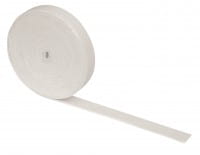An upgrade for your floor: our impact sound insulation mat for more comfort and quiet
What supports sound insulation?

Impact sound is the sound generated by footsteps or other movement on the floor that propagates through the floor and adjacent walls and ceilings. Uninsulated impact sound transmission can cause noise and vibration to spread through the room in an undesirable manner and can cause a significant nuisance. Proper impact sound insulation can help reduce the spread of impact sound, thereby improving room acoustics and quality of life. There are several types of impact sound insulation that can be used, depending on the application and floor covering.
A common method of impact sound insulation is the use of special insulation mats that are laid under the floor covering. These mats are made of different materials and have different thicknesses to absorb sound according to the requirements. It is important to select the appropriate impact sound insulation according to the requirements and the desired application area. For example, a higher traffic area such as a hallway or stairwell requires a thicker impact sound insulation than a bedroom or living room. Choosing the appropriate impact sound insulation can not only reduce sound transmission, but also provide a comfortable underfoot feel and improved thermal insulation.
DURAL Impact sound insulation mat SW14
The DURAL Impact Sound Insulation Mat SW14 is specially designed to reduce impact sound in rooms with ceramic floor coverings. With a thickness of only 1.3 mm, it is extremely thin and therefore does not affect the height of the floor construction. In addition to improving room acoustics, the mat also offers reduced foot cold without compromising the effect of underfloor heating. The mat consists of four layers and forms the perfect base for installation under ceramic floor coverings in residential, commercial and industrial areas. It is suitable for substrates such as wood, concrete, screed (including heated screeds) and the like. It can also be laid on existing, old coverings or underneath additional surface heating systems.
With the impact sound insulation mat, you get a first-class mat that not only reduces impact sound and improves room acoustics, but also provides a pleasant feeling underfoot. In addition, it offers easy and quick installation on various substrates, making it suitable for many applications.
Properties of the DURAL impact sound insulation mat SW14

The combination of light and soft with heavy and hard layers is the basis for the versatile properties of DURABASE SW14.
- Sound absorbing to the subfloor
- Impact sound reduction of up to -14dB
- Improvement of room acoustics
- Good thermal conductivity, ideally suited for underfloor heating
- Diffusible
- Stress relieving and pressure stable
- Only 1.3 mm thin
- Free of PVC and halogens
- Flame retardant
The properties for impact sound improvement are certified with a test certificate of the Materialforschungs- und Prüfanstalt Leipzig/Germany
Fields of application of the DURAL impact sound insulation mat SW 14
Our impact sound insulation mat is extremely versatile and can be used in various applications, including private rooms, business premises and offices. It is capable of supporting area loads up to 2.0 kN/sqm under tiles. The sound insulation mat can be installed in conjunction with ceramic tiles or natural stone tiles on standard-compliant underfloor heating systems, as it is suitable in terms of thermal resistance value. Additional surface heating systems can also be applied to the SW mat in accordance with the manufacturer's specifications.
The mat is suitable for installation on a wide range of substrates such as cement screed, heated screed, anhydrite screed with a residual moisture content of less than 3%, wood, chipboard, tile flooring or similar. Another practical application is that it can also be laid on old floor coverings. This can save laying new screed with better insulation.
Processing
- The subfloor must be dry, free of components that may cause adhesion problems, load-bearing and level. Any compensatory measures must be taken before laying our sound insulation mat.
- Prepare the properly prepared substrate with a suitable adhesive primer.
- Apply thin-bed or flexible mortar to the substrate using a 4 x 4 mm notched trowel. The choice of adhesive depends on the type of substrate. For most substrates, a hydraulic-setting flexible mortar or fast-setting flexible adhesive conforming to DIN EN 12004 / C2 can be used.
- Place the cut-to-size sheet on the adhesive with the pressure facing upwards and press firmly. Lay the sheets butt to butt. Stagger joints of adjacent sheets at the end of the sheet by at least 30 cm.
- Cut approx. 5 cm high edge insulation strips and place them all around the walls. If necessary, additionally cover all mat joints and edge connections with self-adhesive masking tape (approx. 2 cm wide).
- After sufficient curing of the tile adhesive, the tiles or natural stone coverings can be laid directly onto the mat using the thin-bed method. In general, the generally accepted rules of technology must be observed! The following applies to all products/materials: The usability with regard to mechanical and chemical loads must be carefully checked in each individual case before laying the mat. Protect material from sunlight.
Still not informed enough? Then we have a detailed blog report in our news section on the subject of "Sound and heat insulation".


